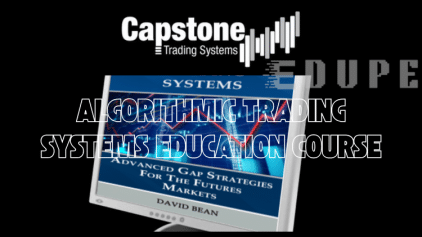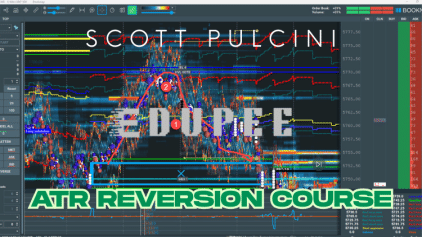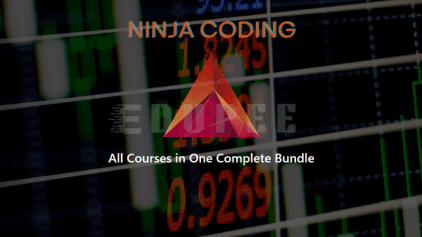Volatility Levels Deep Dive with Jay by Dan Sheridan – Instant Access Download
Content Proof:
In-Depth Review of Volatility Levels Deep Dive with Jay by Dan Sheridan
In today’s fast-moving trading environment, mastering volatility is essential for traders at every level. The “Volatility Levels Deep Dive” course offers traders an in-depth look at how to approach volatility through practical options strategies. Led by Jay Bailey, under the guidance of renowned mentor Dan Sheridan, this program unpacks both the theory and application of volatility in trading. Participants will explore the Volatility Index (VIX), understand its historical trends, and learn how to apply proven strategies that leverage different volatility levels. This course serves as a valuable resource for anyone looking to strengthen their knowledge of volatility and its role in successful trading.
Understanding the VIX
The first module of the course introduces participants to the Volatility Index (VIX), often referred to as the market’s “fear gauge.” The VIX measures the market’s expectation of volatility over the next 30 days based on S&P 500 index options. Understanding the VIX is crucial for traders, as it provides insights into market dynamics, enabling them to gauge potential price fluctuations and market sentiment.
The Importance of the VIX in Trading
The VIX is far more than just a figure on a chart—it is a vital indicator of market sentiment and potential movement. A rising VIX often reflects growing fear or uncertainty, signaling the possibility of a market decline. On the other hand, a low VIX suggests stability and limited expected volatility. By gaining a clear understanding of how the VIX functions, traders can design strategies that adapt effectively to the current market environment.
- Key Takeaways:
- The VIX reflects market expectations of future volatility.
- High VIX levels often correlate with downturns, while low levels suggest stability.
- Understanding VIX trends is essential for effective trading strategies.
VIX History
One of the most illuminating aspects of the Volatility Levels Deep Dive course is its historical overview of the VIX. This section contextualizes current volatility levels within the broader spectrum of market patterns. By studying past VIX movements, traders can spot recurring trends and adjust their strategies accordingly.
Historical Context
- Major Market Events: The history of the VIX is replete with significant market events, including the 2008 financial crisis and the COVID-19 pandemic. Each of these events triggered drastic spikes in the VIX, serving as a reminder of the market’s sensitivity to external shocks.
- Long-term Trends: Over the years, the VIX has exhibited a tendency to revert to its mean. This observation suggests that while short-term volatility can be unpredictable, long-term trends may provide more stable patterns to anticipate.
Traders can leverage this historical understanding to better position themselves, minimizing risks and maximizing potential gains. Building historical context into trading plans enhances decision-making and strategic formulation.
Interpreting the VIX Range
The third segment of the Volatility Levels Deep Dive course focuses on techniques for interpreting the VIX range effectively. Understanding how to read the VIX can significantly influence trading decisions, allowing traders to make informed choices based on market conditions.
Techniques for Interpretation
- Identify the Range: The VIX typically operates within a defined range. Understanding this range helps traders evaluate whether current levels are high, low, or neutral, enabling them to adjust their strategies accordingly.
- Use of Historical Averages: Analyzing historical averages of the VIX can provide insights into what constitutes “normal” volatility for given time frames. Traders often compare current VIX levels against these averages to gauge market sentiments.
This interpretation is not merely theoretical; it has practical implications. When market sentiment is high, traders might seek put options to hedge against potential downturns, whereas low VIX levels may encourage more aggressive calls.
Benefits of Accurate Interpretation
- Informed Decisions: Enhanced interpretation skills enable traders to make decisions that align with market sentiment.
- Risk Management: Accurately reading the VIX range can improve risk management strategies, protecting traders from sudden market shifts.
Trading the VIX Range
The final segment of the course revolves around practical advice on how to effectively trade based on observations of volatility levels. This instruction is crucial as it translates theoretical knowledge into actionable strategies suited for various market conditions.
Practical Trading Strategies
- Real-World Examples: Participants are exposed to various strategies tailored for different volatility environments. For instance, in a high-volatility environment, traders might employ straddle strategies to capitalize on potential price movements, while in low-volatility settings, selling options may yield profitable income.
- Options Strategies: The course emphasizes the application of specific options strategies for trading volatility. This approach facilitates not just understanding volatility but also developing practical techniques that can be immensely profitable.
List of Common Strategies:
- Straddles: Profiting from large price moves regardless of direction.
- Strangles: Similar to straddles but involves different strike prices.
- Naked Puts: ******* on stock stability while earning premiums.
Real-World Application
The effectiveness of these strategies is highlighted through real-world examples, ensuring participants leave with actionable insights. Integrating historical trends with current data allows traders to navigate the complexities of the market with more confidence.
Interactive Learning Experience
One of the standout features is the encouragement of student engagement through email interactions with instructors. This openness paves the way for clarifying complex concepts and addressing specific challenges that traders might face.
Benefits of Flexibility
- Self-Paced Learning: Flexibility allows participants to revisit challenging topics and consolidate knowledge, critical in mastering volatility trading.
- Engagement with Experts: Having direct access to instructors enhances the learning experience and allows for deeper understanding.
Conclusion
The Volatility Levels Deep Dive course stands out as a powerful resource for traders eager to master the complexities of volatility trading through options. By combining a deep understanding of the VIX with actionable trading strategies, participants gain the tools needed to navigate unpredictable markets with greater confidence. With its blend of historical insights, accurate interpretation methods, and real-world applications, the program empowers traders to manage risk more effectively while maximizing opportunities. For anyone seeking to strengthen their volatility trading skills, this course offers a valuable step toward long-term success.
Get Your Free ‘Volatility Levels Deep Dive with Jay by Dan Sheridan’ PDF Sample












Reviews
There are no reviews yet.